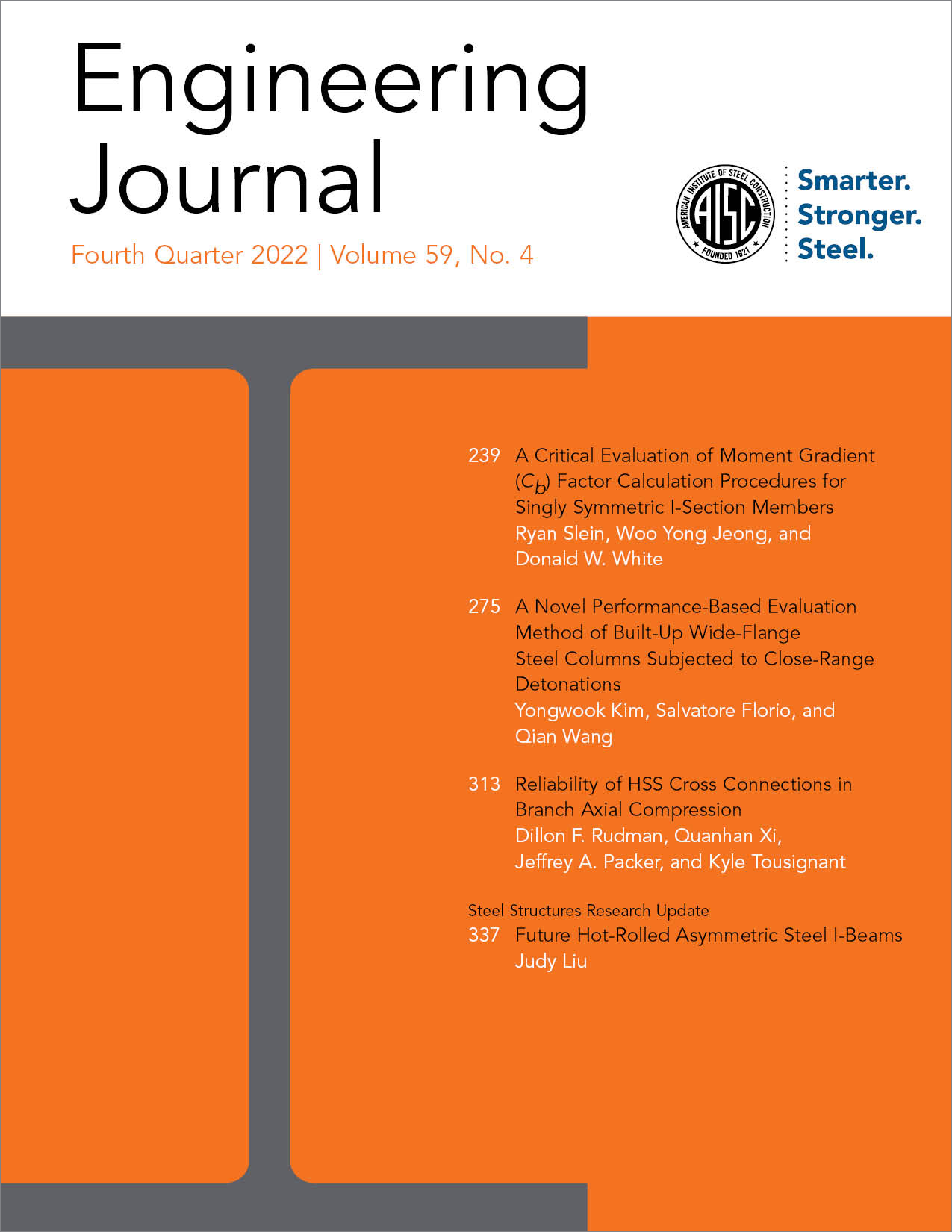A Novel Performance-Based Evaluation of Built-Up Wide-Flange Steel Columns Subjected to Close-Range Detonations
DOI:
https://doi.org/10.62913/engj.v59i4.1305Keywords:
steel column, close-in detonation, near-contact detonation, blast, performance-based, built-up, transportation, securityAbstract
Transportation facilities are crucial civil engineering structures, which are vulnerable to increasing risks of potential explosive loadings. The structural members of older facilities were typically made of steel and built up from angles and plates joined together with rivets, rather than directly rolled in steel mills. Most existing blast mitigation design approaches were made for military or petrochemical facilities in rural areas with significant stand-off distances. However, transportation facilities, which are located in congested major cities, with structural members exposed to pedestrians and passengers, are subject to the risks of potential close-range or near-contact detonations. Recently, new approaches were developed to address the potential progressive collapse of high-rise buildings in urban environment, but the approaches do not address the localized deformations or failures on column flange or web elements that are common in close-range or near-contact detonations. For this reason, the existing approaches are not appropriate to the blast mitigation design of the urban transportation structures. Instead, a high-fidelity, nonlinear, explicit finite element analysis is suggested. Typical practicing structural engineers do not have opportunities for education or training for such analysis due to technical challenges, cost, and time constraints. The main goal of the present research is to provide practical guides of the nonlinear, explicit finite element analyses for close-in or near-contact detonation problems that can be followed by practicing structural engineers and to provide simple design charts that can be used as a preliminary tool without performing the analyses. To accomplish the goal, more than 200 parametric study models were built for nonlinear, explicit finite element analysis of built-up steel columns subjected to close-in detonations. Characteristics of the steel materials for the built-up columns were investigated and incorporated in the numerical models. The models were determined so that they can cover practical ranges of columns, stand-off distances, and charge weights. The analysis results were presented on contour graphs using novel performance-based damage criteria. The graphs and design methodology presented in this study can be used as an efficient and practical tool to quickly assess blast resistance of built-up steel columns in transportation structures.

